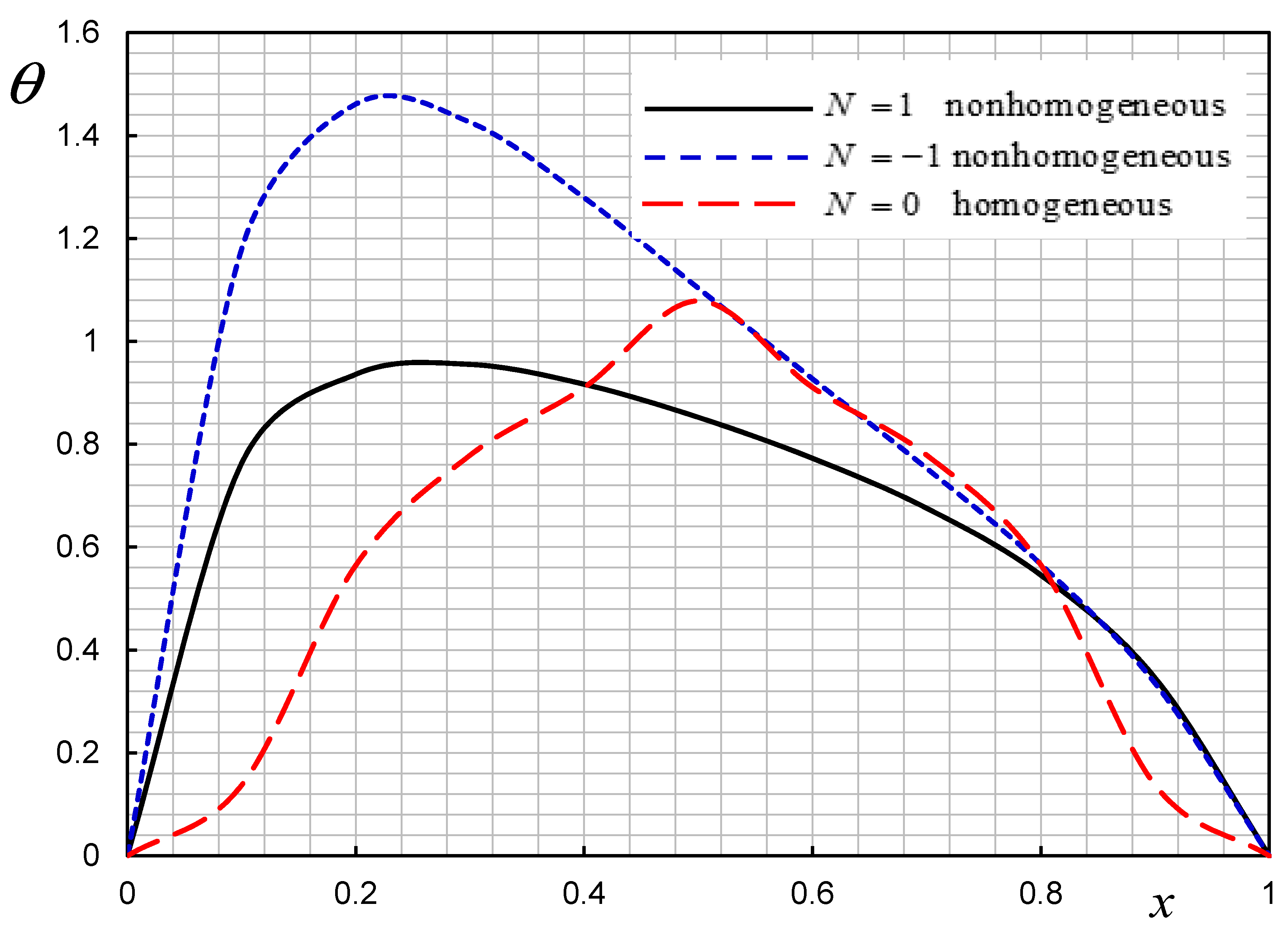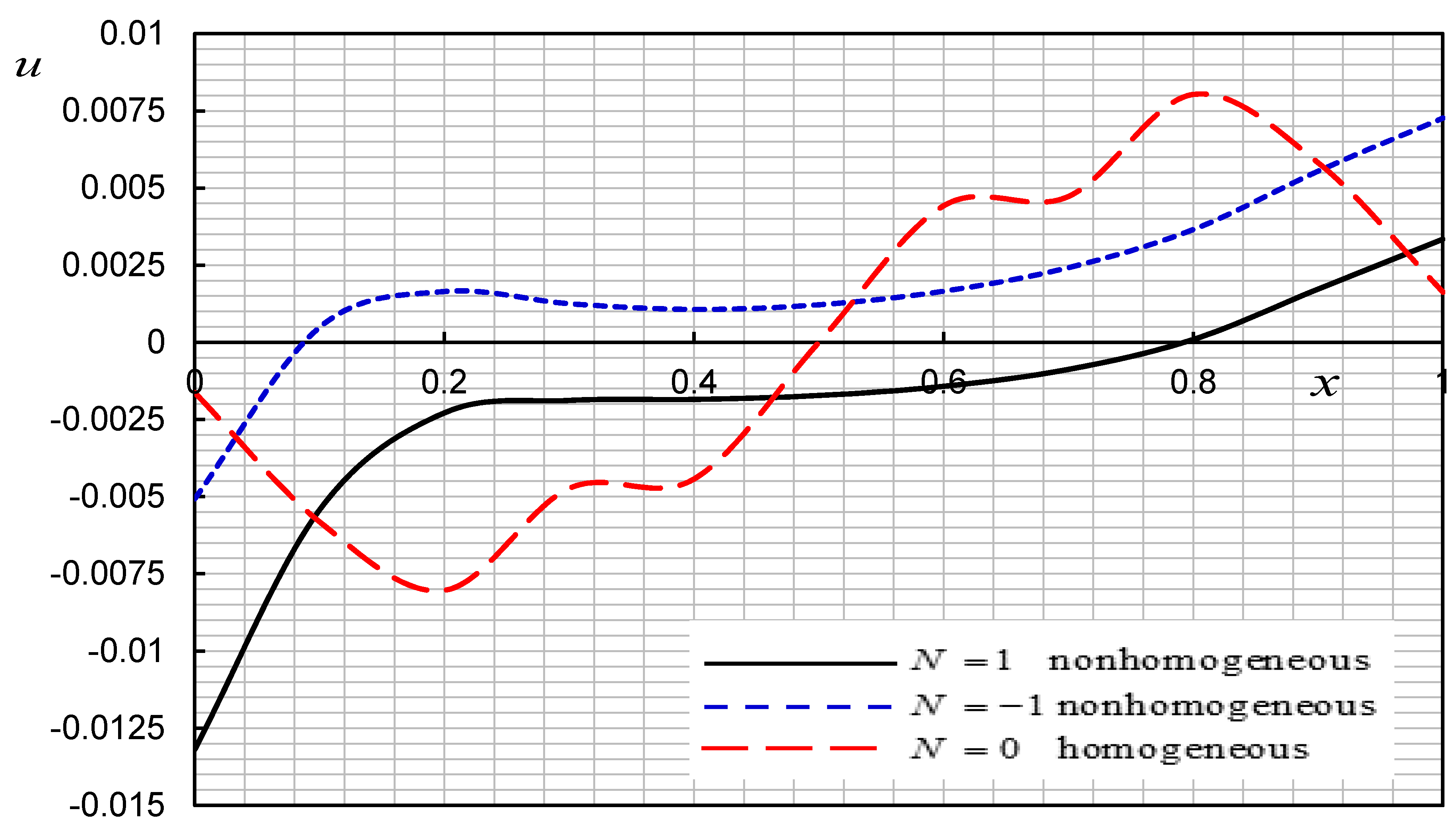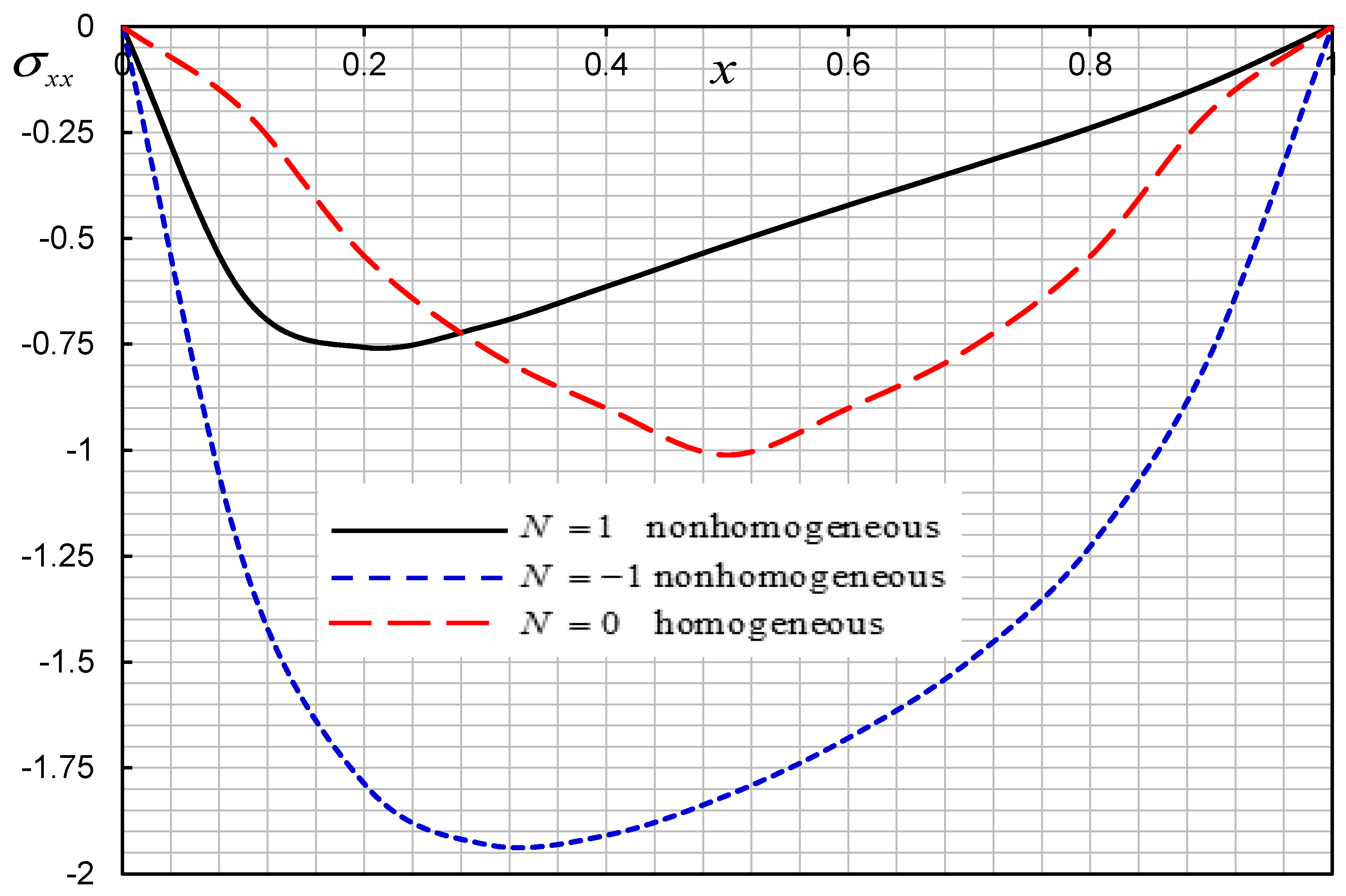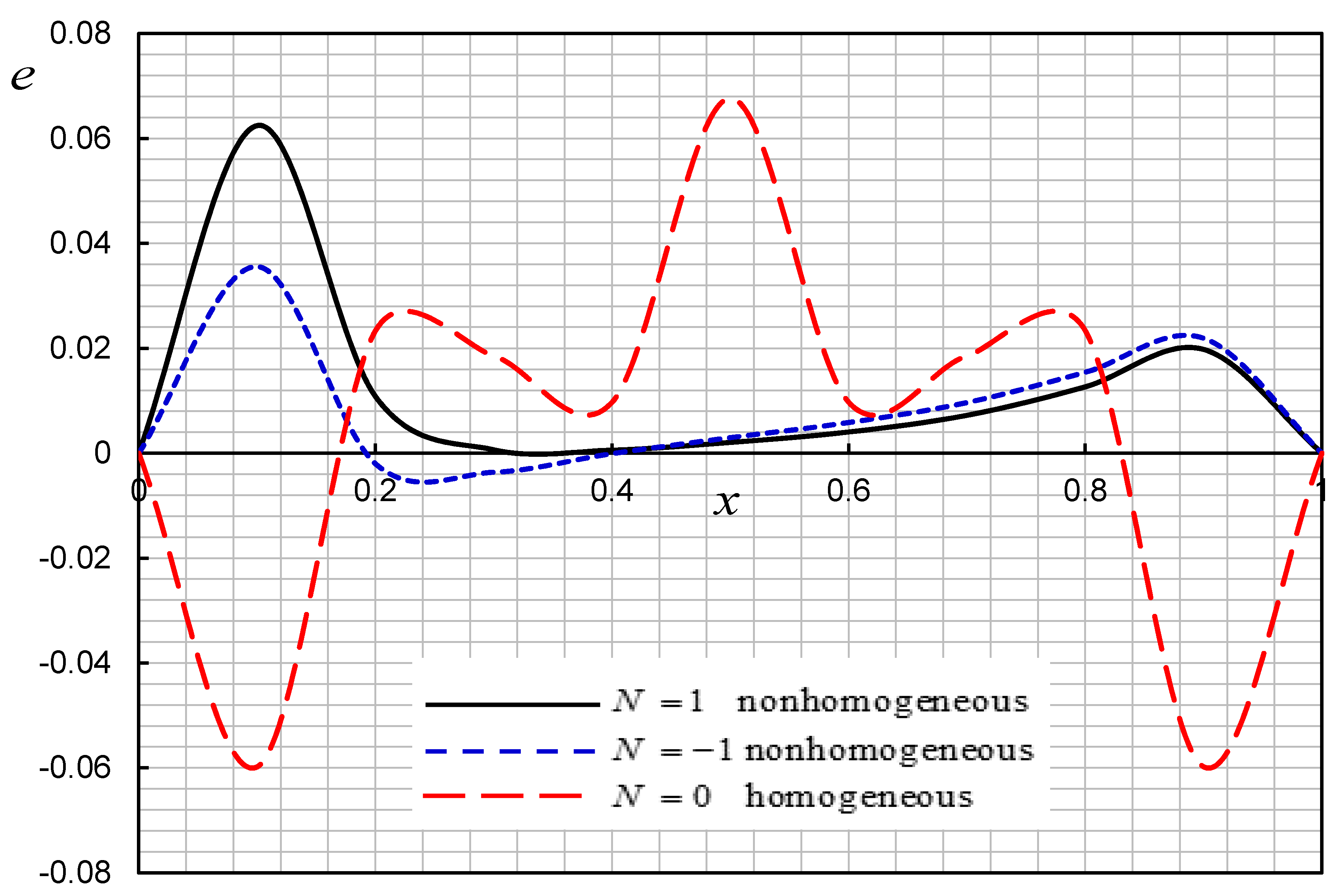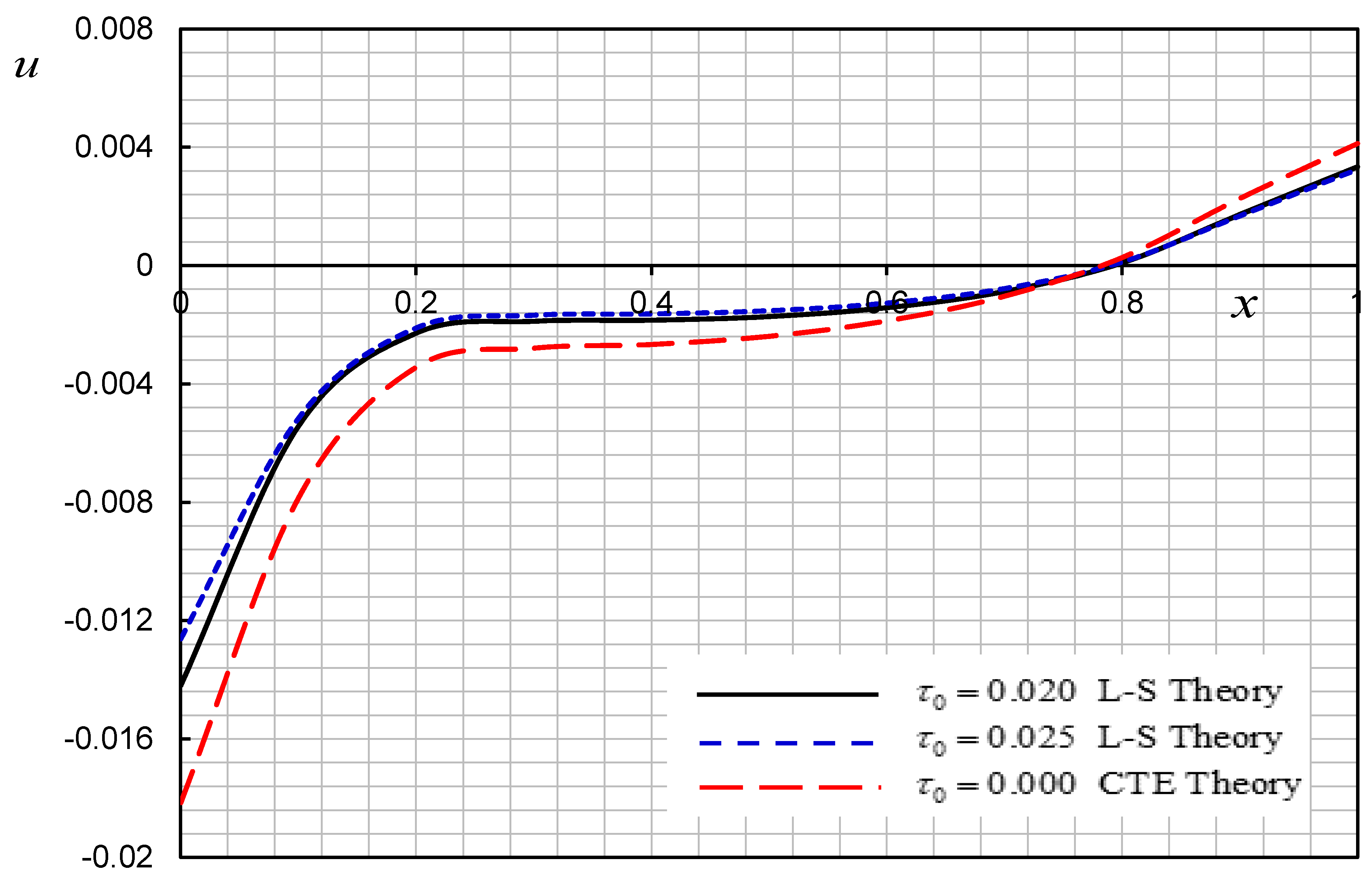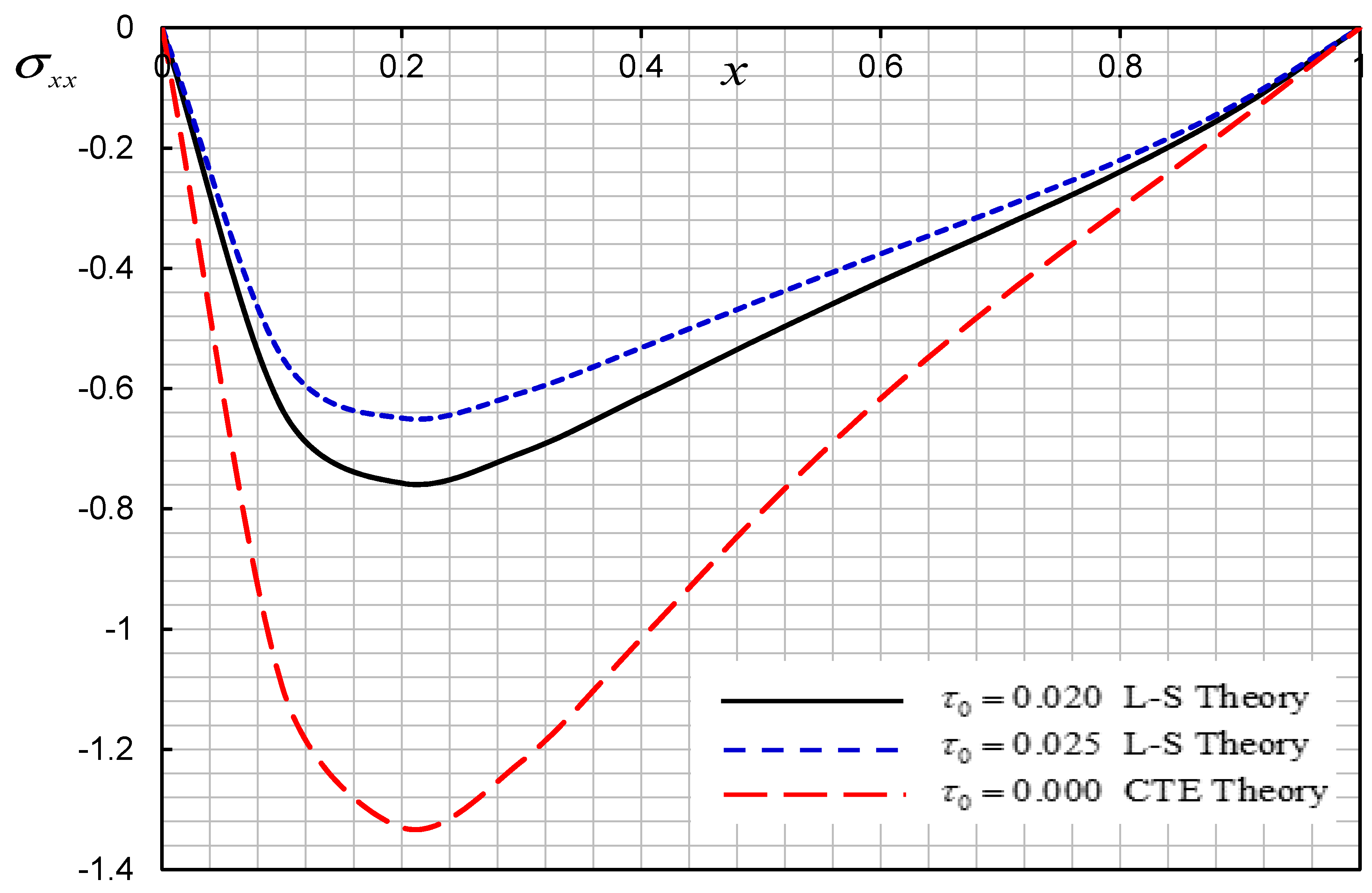1. Introduction
Functionally graded materials (FGMs) are defined as the diverse and advanced materials whose thermal and elastic characteristics differ slowly and continually between surfaces, resulting in the reduction of thermal stress (TS). Therefore, they are extremely helpful in nuclear, aviation and space technology applications. Their applications extend to other fields, such as geophysics, plasma physics, magnetic storage and structural elements, as well as the measurement of thermoelasticity.
Because of the need for resistant materials in the extreme temperatures involved in a lot engineering applications as thermal barrier coatings and engine parts, many efforts have been exerted in their development. For example, FGMs were introduced as one of these materials in the late 1980s in Japan. Their macroscopic material characteristics always differ, distinguishing them from laminated composite materials whose sudden shift of material properties across layer interfaces results in significant interlinear stresses that cause damage. Both FGMs and laminated composite materials combine the favorable constituent stages of properties to achieve superior efficiency.
Ye et al. [
1] proposed the perfect thermoelastic axisymmetric solution problem of the heated functionally graded uniformly transversely isotropic cylindrical shell. They argued that the elastic modulus and the coefficient of linear expansion of temperature differ with the product of the variable radial coordinate of the power form. Utilizing a finite difference technique, El-Naggar et al. [
2] investigated the temperature transient stress in an orthotropic nonhomogeneous rotating hollow cylinder. Wang and Mai [
3] examined the one-dimensional transient TS in heterogeneous materials, e.g., spheres and plates, by employing the finite element method (FEM). Ootao and Tanigawa [
4] investigated a transient thermoelasti functionally graded hollow cylinder one-dimensional problem, in which thermoelastic and thermal constants differed with the power product form of a variable of the radial coordinate. Shao et al. [
5] worked out a thermomechanical problem in an FGM circular hollow cylinder, in which the material characteristics are independent of temperature and often differ radially.
Because of the applications of broad pulsed laser technology in processing material and nondestructive characterization and detection, exciting the thermoelastic waves in solids using a pulsed laser is of considerable interest. If a solid is illuminated and has a laser pulse, the temperature rises. Accordingly, thermal expansion is induced, and a thermoelastic wave is created. In ultrashort pulsed laser heating, two considered effects become significant. One of them is the non-Fourier effect in thermal conduction, which is a modification Fourier’s law of thermal conduction to justify the effect of TR time in the collision phase of the energy carrier. Moreover, considering the non-Fourier effect removes the uncertainty of the infinite propagation speed of thermal signals. The other effect is the stress wave dissipation because of the combination of temperature and strain rate. As a result, the stress wave associated with the mechanical energy is converted into the material’s thermal energy.
Thermoelasticity refers to different phenomena related to the interaction that occurs within a body between deformation and heat exchange. The classical uncoupled thermoelasticity theory describes two processes that are not consistent with physical observations. First, no elastic terms are included in its thermal conduction equation. Second, the thermal equation is a parabolic form that predicts the infinite propagation speed of thermal waves. Biot [
6] developed the principle of coupled thermoelasticity CTE to address the first shortcoming. In this theory, the equations governing thermoelasticity are paired in order to resolve the classical theory’s first paradox. Nevertheless, the second shortcoming is common in these theories because the thermal equation is still parabolic for the coupled theory.
Because of the development of pulsed lasers, particle accelerators and rapid burst nuclear reactors, etc., that can supply heat pulses with increasing rapidity, the theory of generalized thermoelasticity has attracted considerable attention. The development of the second sound effect has been revisited. Two different generalized thermoelasticity models are often utilized. They were developed by Lord and Shulman (L–S) [
7], and Green and Lindsay (G–L) [
8]. While L–S theory proposes one relaxation time, so that Fourier’s law of thermal conduction is modified, G–L theory suggests a thermoelastic theory with two thermal relaxation times, and results in modifying the equations of motion and energy.
Researchers have tried to resolve thermoelastic wave problems, taking into account the non-Fourier effect. However, they neglected the temperature strain rate coupling effect. Kao [
9] studied the non-Fourier effect on the thermoelastic wave in a half-space. McDonald [
10] examined the significance of thermal diffusion for generating thermoelastic waves in the metals created by Gaussian laser beams heating a surface. Furthermore, Enguehard and Bertrand [
11] explored the laser pulse’s influence and the optical penetration depth duration on longitudinal acoustic waves caused by absorption of a volumetric laser beam.
With the action of a thermal shock—for example, an ultra-short laser pulse—the thermal processes are very rapid, which is interesting from the thermoelasticity standpoint, and requires coupled temperature and deformation fields analysis. This means that the very rapid movements of the temperature shock induce the elements’ structure, causing and reducing the rise of inertial forces, and the rise of the vibrations is very significant. The expansions in oscillatory movements and the rapid changeable contractions generate changes temperature in the susceptible material, owing to diffusion due to heat conduction (Trajkovski and Cukic [
12]).
Gaussian beams have a profile of Gaussian intensity at any location along the axis of the beam, which only causes variation on the radius beam. A Gaussian beam remains Gaussian after passing simple optical elements (e.g., lenses without optical aberrations). Gaussian beams are the lowest-order of distribution of a self-consistent field in optical resonators, provided that there are no intracavity elements causing distortions on the beam. For that reason, the output beams of many lasers are Gaussian. Single mode fibers have beam profiles which are usually close to Gaussian beams. There are Hermite–Gaussian types, so-called higher-order modes. These have more complicated field patterns and exhibit the parameter product of a larger beam; in cases with a less than perfect fit, the Gaussian approximation is popular due to the relatively simple rules for the calculation of beam propagation. Pulsed lasers are an important source of thermal effects, which give a high density in small time periods, which in turn has great importance in many areas, especially economic ones. The so-called ultra-short laser generally emits radiations that have a pulse duration ranging from nanoseconds to femtoseconds. In the case of laser heating with very short pulses, the high-intensity energy flux and the very short duration laser beam cause situations where there may be very large temperature gradients, or a very high heating velocity may occur on the material surface [
13].
Al-Huniti et al. [
14] investigated the dynamic reactions of a copper rod under the wave form thermal conduction model, because of a moving heat source. Employing the LT, the temperature was directly obtained from the thermal conductivity equation. Abouelregal [
15] used the dual-phase-lag heat transfer model in an isotropic solid sphere. To solve the problem encountered, he maintained the boundary of the sphere at a stable heat flux and limited surface displacement. Youssef and Al-Felali [
16] examined the stress fields and temperature-induced effects in an elastic half-space concerning the classical and generalized CTE. They used a non-Gaussian laser beam to heat the bounding plane surface. Abo-Dahab and Abouelregal [
17] discussed the micro-beam resonators’ vibrations caused by a harmonically variable heat. Elsherbeny et al. [
18] investigated thermoelastic analysis for an infinite rigid cylinder with variable thermal conductivity caused by harmonically distributed heat. Marin et al. [
19] discussed the problems for micropolar porous bodies considering the mixed initial-boundary value. Riaz et al. [
20] and Bhatti et al. [
21] investigated Hall’s numerical study’s current impact, and heat transfer on peristaltic propulsion of particle-fluid suspension with compliant wall properties. Abo-Dahab and Abouelregal [
22] investigated a problem in two dimensional thermoelasticity half-space with a microstructure under a uniform thermal shock. Abbas [
23] investigated the effects of a moving heat source and relaxation times on a generalized two-temperature thermoelastic material. Abbas and Abo-Dahab [
24] discussed a thermal shock numerical solution problem of generalized magneto-thermoelasticity with variable thermal conductivity for an infinitely long annular cylinder.
In the present paper, the authors provide a generalization solution to the thermoelastic wave in a TSS caused by pulsed laser heating. They studied the non-Fourier effect in thermal conduction, the temperature-strain coupling effect, and the volumetric loss from laser beam energy. In
Section 2, the authors derived this generalization solution to the thermoelastic wave produced by pulsed laser heating. Moreover, they obtained the numerical figures of temperature, stress, displacement and strain of a hypothetical material. Accordingly, they performed calculations and validated the findings in
Section 4. The results obtained indicate a significant strong impact of FGM, TSS and laser parameters.
2. Formulation of the Problem and Governing Equations
All equations of field, represented by L-S theory [
7], may be formulated as follows:
This is known as the constitutive relation, where
is the tensor of stress,
is the displacement tensor,
is the Kronecker delta function,
,
is the thermal expansion,
is relaxation time, and
is the resonator’s temperature increment, in which
is the temperature distribution,
is the environment temperature, and coefficients
are the Lamé constants for the material that can be represented by
where
expresses the Young’s modulus and
stands for the Poisson’s ratio.
The equation of motion, in which
is the body force component and
, takes the form
and
This forms the thermal conduction theory. stands for the thermal conductivity, is the specific heat per unit mass, is relaxation time, is the body temperature and is the source of heat. When , Equations reduce to CTE.
The thermoelastic characteristics in FGM layers often change in the direction of thickness. The study of the variation of the elastic properties generally concerns polynomial and/or exponential functions applied directly to the engineering constants, e.g., Shear Moduli, Young’s Moduli
, Bulk Moduli and/or Poisson ratio
, or directly to stiffness. Poisson’s ratio
of FGM has a limited number of variations. We argue that
is a constant, as is the thermal expansion coefficient
. Under the functionally graded solid,
,
,
,
and
are not constant anymore. That is, they depend on space. Therefore, we substitute
,
,
,
for
in the following
where
,
,
,
and
are constants and
is a dimensionless function of space variable
.
After that, the corresponding Equations
–
are given, as follows:
4. Numerical Example and Discussion
To resolve the thermal displacement, stress, temperature and strain in the spatial–temporal domain, we applied the inversion formula of Laplace to the Equations , , and , respectively. We did so numerically by employing a method based on the aforementioned Fourier series expansion.
We provide some numerical results based on the theoretical results concluded in the former sections. We consider a copper material with material constants as shown in
Table 1.
We did numerical calculations of the temperature, displacement, strain and components of stress along the x- direction. We carried out the computations for one time, i.e., and the laser intensity (i.e., L0 = 1011 J.m−2). Therefore, we adopted the Mathematica programming language for all numerical calculations.
Firstly, we can say that the very rapid speed of the thermal processes of a thermal shock, for example an ultra-short laser pulse, is interesting from a thermoelasticity standpoint, requiring coupled temperature and deformation fields analysis. This means that very rapid movements of the temperature shock induce the elements of structure, thus causing and reducing the rise of very significant inertial forces, and, thereby, the rise of vibrations. The expansions in oscillatory movements and the rapid changeable contractions generate temperature changes in the material susceptible to diffusion, owing to the heat conduction (Trajkovski and Cukic [
12]).
We performed the numerical calculation for two different cases. The first of them examined how the dimensionless temperatures, displacement, strain and stress vary with different values of the parameter of nonhomogeneity when the relaxation time remains constant; N is the material graded parameter or the nonhomogeneity parameter. The mechanical and thermal properties of FGMs are assumed usually to have the same functions of certain space coordinates. In our work, the properties of FGM material are assumed to vary in x-direction, and are described in terms of exponential functions along the strip length. On the other hand, the nonhomogeneity parameter significantly affect the thermo-mechanical stress fields around the crack tip, and give a negative or zero or positive value due to the material nature; moreover, the crack compressesed, unaffected or extended with the effect of nonhomogeneity.
The second examined how the dimensionless temperature, stresses and displacement vary with different values of the relaxation time when the nonhomogeneity parameter remains constant.
For the first case, we take three different values of the parameter of nonhomogeneity , and (homogeneous case), while the constant relaxation time .
Figure 1,
Figure 2,
Figure 3 and
Figure 4 illustrate that the parameter
significantly affects all fields. The results coincide with those mentioned in [
25,
26]. From
Figure 1 and
Figure 2, it can be found that the temperature
and displacement
distributions decrease as the nonhomogeneity parameter values increase.
Figure 3 shows that, as the value of the parameter of non-homogeneity
decreases, the peak of TS decreases. In
Figure 4, the strain at both ends of the TSS is always zero, which matches the described boundary condition. We note that this matches the mechanical boundary condition. The displacement distributions, temperature and the absolute values of TS reach the maximum value at a certain distance. Then, they gradually decrease to zero, suggesting that the equation satisfied by the L–S model predicts propagation by a finite speed of the thermal signal.
In the second case, we consider different values of relaxation time
while the constant nonhomogeneity parameter is
.
Figure 5,
Figure 6,
Figure 7 and
Figure 8 illustrate the displacement, stress, temperature, and strain distributions for different three values of the parameters
. We found that relaxation time
parameter significantly affects all fields.
For a comparison of the results of the two models of thermoelasticity, the L-S model and CTE model
, the displacements, temperature, and stresses are shown in
Figure 5,
Figure 6,
Figure 7 and
Figure 8. The figures show that the CTE model differs from the L–S theory.
Numerical results show that the effect of thermal relaxation causes the results of the non-Fourier heat conduction model to reach peak values later than those in the Fourier model, in agreement with [
29].
It is clear that the effects of non-homogeneity, TSS and laser parameters are significant in the phenomenon of a thermoelastic on a TSS non-Gaussian laser beam.
Finally, the Gaussian beam and non-Gaussian beam provide an excellent and applicable example of important concepts relating to laser modes, beam radius and time diffraction limits. A change in the beam radius definition from aperture to focal plane also alters the mode content of the beam, resulting in inconsistent measures. The mode content of a given beam can change depending upon the experimenters’ choice of definition of radius beam. The content of a given beam mode is determined by the priori choice definition of beam radius [
30].
